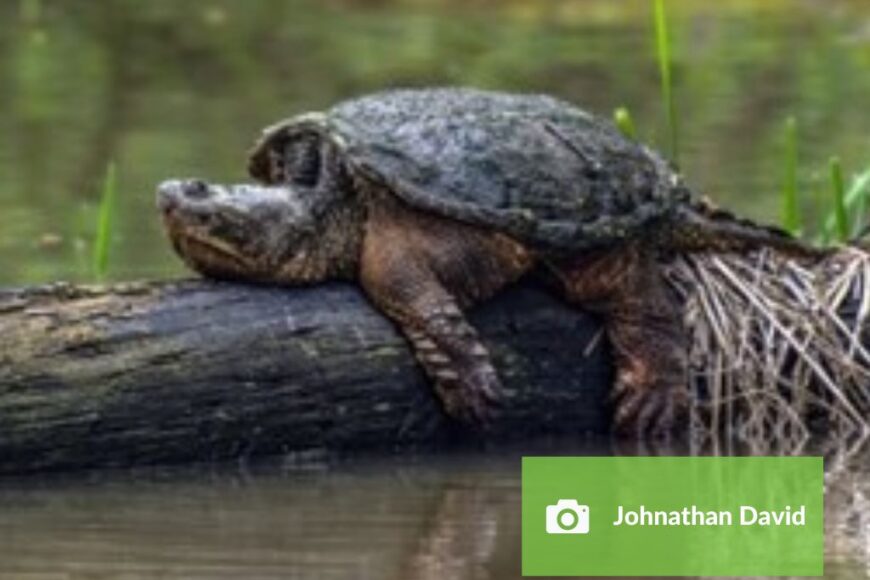Dawson Trail Dispatch, written by Norm Gregoire, March 2023
Page 14 https://issuu.com/dispatch222/docs/dawson_trail_dispatch_march_2023
When talking with community members in the tall-grass prairie natural area about species at risk, one species usually gets the same response: “Oh, I didn’t know snapping turtles were at risk!”. In the more eastern parts of their North American range populations are fairly stable; however, this is not the case in the prairies. The Committee on the Status of Endangered Wildlife in Canada lists them as special concern.
We have come to associate these reptiles with our bodies of water here in the southeast; after all, they have been here for a long time. In fact, snapping turtles are prehistoric and have been around for over ninety-million years! One look at them confirms this. A fully grown turtle weighs 15 kg and occasionally up to 35 kg. Snapping turtles are brown to olive in colour, with a long neck leading to a large head and hooked upper jaw. The long-studded tail and limbs cannot be retracted into the shell due to the small size of the lower shell, which is smaller compared to other species of turtle.
Most other turtles rely on their shell as protection, but due to the snapping turtle’s inability to retract its limbs, it relies on that powerful upper jaw to ward off potential predators. This is how its namesake came to be. Over the years this has caused a bit of misinformation in regard to how aggressive a snapping turtle is. I have to admit that as a kid, when I would swim in waters where snapping turtles could be present, I tended to ball-up my fingers and toes as best as I could. I was scared that a snapper may swim by and take advantage of an easy meal. Although snapping turtles can be defensive on land, in water, they are quite docile, preferring to flee at first sight of you.
This negative outlook on snapping turtles has unfortunately made them a target of persecution by people, who consider them a pest. Snapping turtles are just the opposite! They play a critical role in the ecosystem that they are found in as they are scavengers and can help to keep the waters clean.
The biggest issue snapping turtles face is the loss of their wetland habitat. One of the side effects is road mortality. Adult females may have to travel in fragmented habitat in search of ideal egg-laying nests, which tend to be in sand or gravel-based areas. The shoulders on our roadways are perfect for this. Inadvertently the female, or the young, may be struck by oncoming traffic. If the young do hatch, they may have to travel back through this fragmented area, risking not only road mortality but a greater chance of being predated on.
When a mature, female snapping turtle is lost the effects are very negative. Individuals may live over seventy years old but are not sexually mature until fifteen to twenty years old. This means that when an egg-laying female is lost it takes years for the population to recover.
Snapping turtles have been a part of the landscape for such a long time it would be a tragedy to lose them now. Conservation efforts are making a positive impact and with our cooperation this species at risk should be here for years to come. Please reach out with any questions or concerns: Norm Gregoire sarcommunityliaison@gmail.com

